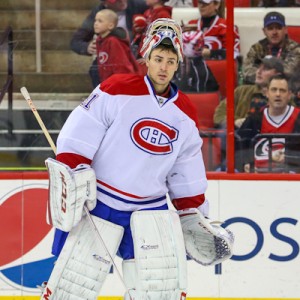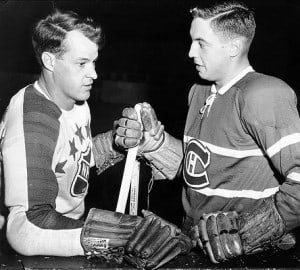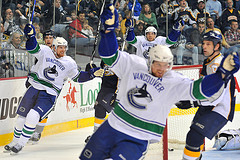Ask any fan what their favourite part of a hockey game is, they will likely tell you it’s goal scoring.
The one-timer, the snipe from the top of the circle, or the dazzling deke on a breakaway. These are all goals that get us out of our seats and make the NHL so entertaining.

Unfortunately the league is averaging 5.4 of goals per game this season. It’s the lowest total since 2003-04, when clutching, hooking and holding was commonplace.
It’s surprising to see goal scoring this low, especially with the implementation of 3-on-3 overtime this season. The new overtime format has diminished shootouts, but overall goal scoring is still trending downwards.
The main reason is because of improved goaltending. That’s why one rule change you can expect to see next year is streamlined goaltending equipment. There seems to be a consensus among general managers about this change.
Something needs to be done about goaltender’s effectiveness in order to increase scoring. Shooting percentage across the league is currently 8.87%, which is tied for lowest in league history with the 1960-70 season.
Conversely, the league average .916 save percentage this season is the highest total since the league started recording the statistic during the 1983-84 season.
Everyone can agree that they want to see more goal scoring. Here are three changes I’d like to see in the NHL, ranked from least to most effective in terms of improving goal scoring.
Remove the Trapezoid
This rule was initially brought in to stop talented puck-handling goalies from playing the puck way outside of their net. Guys such as Martin Brodeur, Marty Turco, and Carey Price weren’t able to showcase their puck handling abilities with the new rule.

For each goalie that handles the puck well, there are those that don’t handle the puck well at all. Roberto Luongo and Cory Schnieder come to mind for Canucks fans.
However, if goalies are allowed to leave their net in order to play the puck, should they be fair game to body checks?
This is walking a fine line because the NHL is doing everything they can to protect the goalies. Right now, when a goalie leaves their net, by rule they are completely untouchable by another player.
Referees would have to watch for charging and checks from behind, which is what we’ve seen happen to goalies even with the trapezoid rule in place.
With a removal of the trapezoid, the goalie would knowingly risk being checked if they wanted to play the puck. The hesitation will stop some goalies from playing the puck alltogether, while those that leave their net risk turning the puck over.
The NHL went halfway with this rule in 2014-15, increasing the size of the trapezoid from 18 to 22 feet. It’s time to take the next step and abolish it completely.
Full Two-Minute Powerplays

This archaic rule was implemented during the 1956-57 season, to stop the powerhouse Montreal Canadiens from scoring so many goals on the powerplay. During that season, the Canadiens scored more than a quarter of the league’s powerplay goals.
Even with only six team in the league, that’s an impressive feat.
It inspired a rule change that’s no longer needed. There is so much parity between the 30 NHL teams that the league doesn’t need to worry about one team hogging all of the powerplay goals.
For the last three seasons, the league has averaged below 0.6 powerplay goals per game. Before that, the NHL had not averaged less than 0.6 powerplay goals/game since expansion in 1967-68.
There was a huge increase in powerplay goals after the 2004-05 lockout because players were still hooking and holding, causing an increase in penalties. Now that the NHL has evolved passed that, it’s time to let powerplays run the course.
International Ice Surface
The league is unlikely to ever let this come to fruition, but it’s single-handedly the easiest way to improve scoring in the NHL. The game is faster than ever, and players could use the extra room to manoeuvre and make plays on the ice.

Aside from an increase in scoring, injuries are less likely to occur as well. This gives a better chance of keeping your skilled players in the game which, in theory, should also increase scoring.
Currently, international and NHL ice surfaces are both 200 feet long, but international ice is 15 feet wider (NHL is 85 feet, International ice is 100 feet).
If you wanted to get creative, you could keep the expanded blue line that the NHL has and apply that to the international ice surface. The NHL’s blue line is 64 feet from the goal line, compared to 57 feet on international ice surface. Imagine the Sedins cycling the puck around with all that extra space in the offensive zone.
Goals are exciting and these rules, particularly the last two, would bring a much-needed offensive boost to the game.